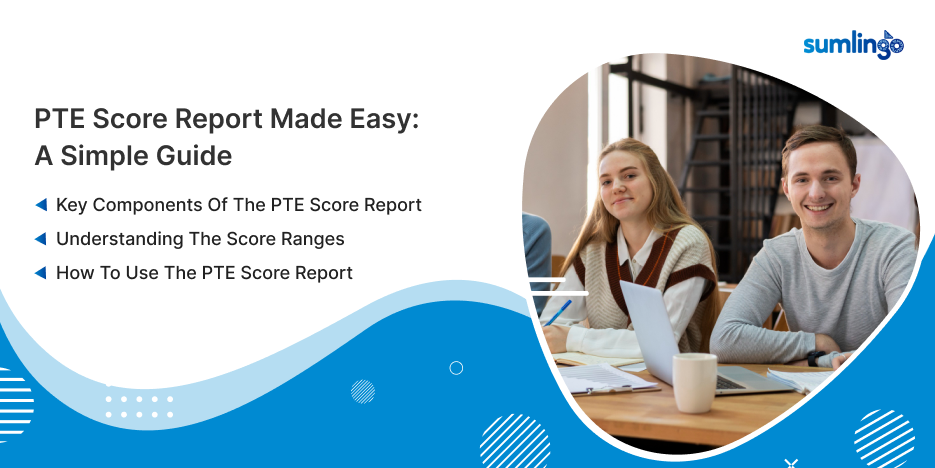If you’re planning to study abroad or apply for a visa, understanding the PTE Academic score requirements is crucial. The Pearson Test of English (PTE) Academic is one of the leading English proficiency tests accepted by universities, governments, and employers worldwide. However, the score you need to achieve can vary based on the country, type of university, and the visa you are applying for. In this blog, we’ll explain the PTE score requirements for different countries, universities, and visa types so you can prepare better.
1. PTE Score Requirements for Different Visa Categories
When it comes to visa applications, each type has its own set of English proficiency standards. The PTE score you need depends on whether you’re applying for a student visa, work visa, or permanent residency (PR). Let’s look at how scores are categorized.
- Student Visa: For student visas, you usually need to show a good level of English. This typically means scoring between 50 and 65 in the overall PTE score, with some institutions or countries asking for slightly higher results. Generally, universities expect students to have basic academic English skills, which include good listening, reading, writing, and speaking abilities.
- Work Visa: When applying for a work visa, the English requirement may be slightly higher compared to a student visa. In countries like Australia and Canada, applicants need to demonstrate vocational or proficient English, which often means achieving scores between 60 and 75 overall. Some skilled jobs or professional visas may need people with higher PTE scores.
- Permanent Residency (PR): For PR applications, the standards are usually more demanding. Countries like Australia and Canada require applicants to show superior proficiency, often scoring between 75 and 85 in the overall PTE score, with an advanced command of English in all sections of the test.
Are you ready to test your skills?
2. Country-Specific PTE Score Requirements
Different countries have specific PTE score requirements depending on the visa type, academic program, and professional needs. Here’s a look at some of the major destinations for international students and workers.
Australia:
Australia is one of the most popular choices for international students, and PTE is accepted by most universities. For student visas, universities usually ask for a PTE score between 58 and 79, depending on whether you’re applying for an undergraduate or postgraduate course. For work visas and permanent residency (PR), you’ll need a higher score, usually between 65 and 85, for skilled visas.
Canada:
Canada accepts PTE scores for student visas, work visas, and PR applications. For a student visa, universities generally require PTE scores ranging from 60 to 75, depending on the level of study. For work visas, employers often look for competent English proficiency, with PTE scores ranging from 60 to 80.
United Kingdom:
In the UK, the PTE Academic UKVI is used for visa applications. This is a special version of the test approved by the UK government for study and immigration purposes. For student visas, universities usually ask for a score between 55 and 70, depending on the course and institution. For work visas, skilled workers may need a score between 60 and 75.
United States:
Many universities in the United States accept PTE scores, but the required scores can vary from one institution to another. In general, you’ll need a score between 60 and 75 for undergraduate programs and 65 to 80 for graduate courses. PTE scores are also recognized for work visas like the H-1B, but they are not as commonly used for permanent residency.
New Zealand:
New Zealand’s universities and immigration authorities accept PTE scores for student visas and work visas. For undergraduate programs, universities usually ask for a PTE score between 50 and 60, while postgraduate programs often require a score between 60 and 70. For work visas, a score of around 60 is generally needed for skilled positions.
3. PTE Score Requirements by University
Each university has its own requirements, and these often depend on the program you are applying for. Here are a few examples of top universities and the PTE score requirements for their undergraduate and postgraduate programs.
Australia:
- University of Melbourne: Minimum PTE of 58-65 (undergraduate) and 65-79 (postgraduate).
- University of Sydney: PTE scores of 58-64 (undergraduate) and 68-74 (postgraduate).
- University of Queensland: PTE scores ranging from 57-64 (undergraduate) to 65-72 (postgraduate).
Canada:
- University of Toronto: PTE scores of 60-65 (undergraduate) and 68-73 (postgraduate).
- McGill University: PTE scores of 60-65 (undergraduate) and 65-72 (postgraduate).
- University of British Columbia: PTE scores of 58-65 (undergraduate) and 65-72 (postgraduate).
United Kingdom:
- University of Oxford: PTE score of 67-76 (undergraduate) and 70-76 (postgraduate).
- University of Cambridge: PTE score of 67-76 (undergraduate) and 70-76 (postgraduate).
- Imperial College London: PTE score of 62-69 (undergraduate) and 67-76 (postgraduate).
New Zealand:
- University of Auckland: PTE score of 50-58 (undergraduate) and 58-65 (postgraduate).
- University of Otago: PTE score of 50-58 (undergraduate) and 58-65 (postgraduate).
- Victoria University of Wellington: PTE score of 50-58 (undergraduate) and 58-65 (postgraduate).
United States:
- Harvard University: PTE score of 68-73 (undergraduate) and 70-76 (postgraduate).
- MIT: PTE score of 65-70 (undergraduate) and 70-76 (postgraduate).
- Stanford University: PTE score of 65-70 (undergraduate) and 70-76 (postgraduate).
Tips for Achieving the Desired PTE Score
Reaching the PTE score you need for your visa or university might feel difficult, but with proper preparation, it’s definitely possible. Here are a few tips to help you succeed:
- Familiarize Yourself with the Test Format: Understand the sections of the test (speaking, writing, reading, and listening) and the types of questions you’ll face.
- Practice Regularly: Use official PTE practice materials and take mock tests to improve your performance.
- Improve Your English Skills: Work on building your grammar, expanding your vocabulary, and improving your pronunciation. Watch English movies, read books, and listen to podcasts to enhance your language skills.
- Time Management: Practice answering questions within the time limit to manage time effectively on the exam day.
- Seek Feedback: Take practice tests for PTE under real exam conditions and get feedback to understand areas for improvement.
Are you ready to test your skills?
In conclusion
PTE Academic score requirements depend on your visa type, university, and destination country, and it is a vital step in planning your study or work abroad journey. Every country and university may have different PTE requirements, so always check with the official authorities and institutions to be sure you meet their standards. With proper preparation and a clear plan, you can achieve your target PTE score and get closer to your goals of studying or working abroad.










